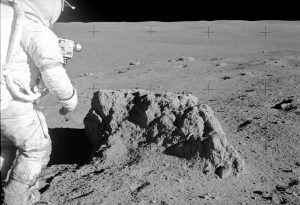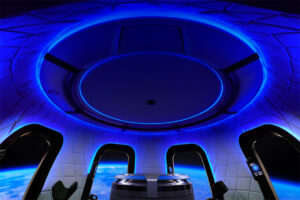New Study Warns of Challenges for the US in Tracking Hypersonic Weapons from Space
20th Dec 2023A recently released report by the Center for Strategic and International Studies (CSIS) discusses the viability of the Pentagon’s endeavors to establish a network of space sensors for detecting and monitoring hypersonic missiles. Despite the ambitious nature of the plan, the CSIS report underscores that the proposed system is likely to encounter significant challenges inherent to hypersonic missiles.
Instead of criticizing the project, the report seeks to emphasize potential issues, thus fostering improved planning and communication. The primary goal is to discern and address technical challenges and discrepancies that could undermine the effectiveness of such a system.
Notably, L3Harris, General Atomics, Lockheed Martin, and Leidos funded the study.
The Complexity of Tracking Hypersonic Missiles: Insights from the CSIS Report
Published on the 18th of December, the report titled “Getting on Track: Space and Airborne Sensors for Hypersonic Missile Defense” serves as an informative read for Pentagon personnel. The main concern emphasized in the CSIS report is the challenge posed by hypersonic missiles, which travel at least five times the speed of sound and follow unpredictable flight paths. Considering these concerns, tracking such missiles is inherently difficult, a key consideration in developing and deploying these weapon systems.
The Pentagon aims to build a multilayered constellation of sensors to track hypersonic missiles. Nonetheless, the report cautions that greater attention is needed to enhance the technology responsible for integrating sensor data, called “sensor fusion.” According to the report, constructing precise missile tracks and avoiding confusion is essential, given that a rapidly moving missile could be mistaken for multiple objects.
The Department of Defense (DoD) allocates significant funds to space sensors as a vital component of its hypersonic defense architecture. Thomas Karako, director of the CSIS Missile Defense Project, emphasized the involvement of experienced individuals in addressing this intricate issue. The report seeks to broaden the discourse and raise awareness about potential challenges.
As per the report, detecting hypersonic missiles is much more complex than traditional ballistic missiles, even though infrared and electro-optical sensing technologies are fully developed. It is stated that identifying a hypersonic heat signature against the Earth’s background is akin to locating a slightly more luminous candle in a sea of candles, which necessitates rigorous testing to ensure its effectiveness.
The Importance of Sensor Fusion in Hypersonic Missile Detection
The report emphasizes the significance of sensor fusion, which combines data from various sensors to generate a more complete and accurate picture of the environment. This is similar to the challenge faced by autonomous vehicles that rely on multiple sensors to navigate their surroundings and avoid obstacles. Autonomous vehicles can get an all-around view of their surroundings using sensor fusion.
The study also recommends exploring other tradeoffs to ensure coverage of the Indo-Pacific zone, where Chinese hypersonic missiles may be deployed. The DoD’s designed multi-orbit architecture includes low, medium, geostationary, and highly elliptical orbit satellites.







Thank you for your comment! It will be visible on the site after moderation.